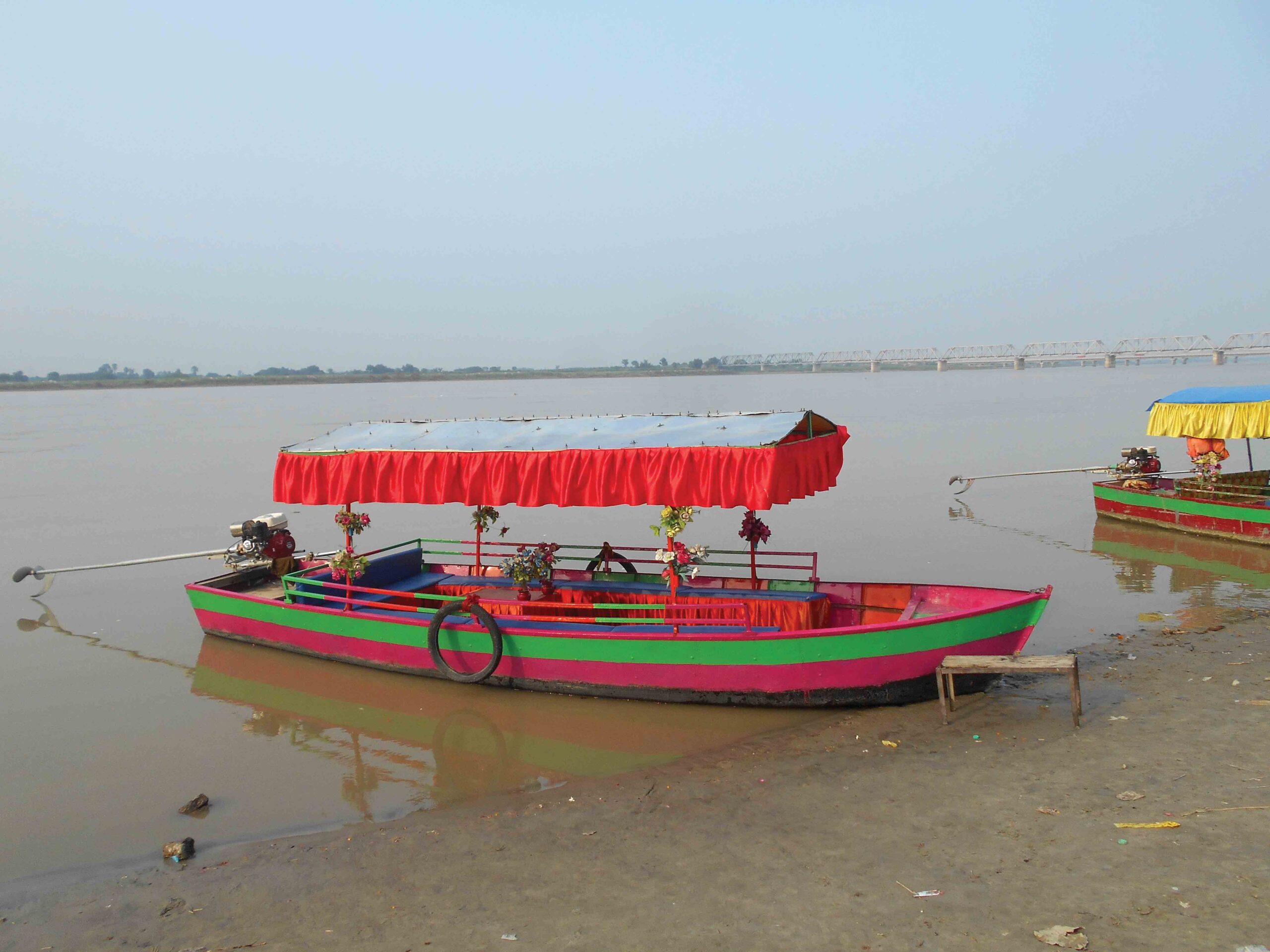- Cover Story
- Governance
- Globe Scan
- Corruption
- State Scan
- Talk Time
- Cover Story
- Governance
- Globe Scan
- Corruption
- State Scan
- Talk Time
Recent Posts
© Copyright 2007 - 2023 Gfiles India. All rights reserved powered by Creative Web INC.SocietyAyodhya through the ages
Serving the mightiest is the religious place’s burden. Ayodhya too has dutifully served the mightiest in its many avatars.
Amarnath DubeDecember 9, 20183 Mins read118 Views
 Written by Amarnath Dube
Written by Amarnath DubeAyodhya is the Jerusalem of Eastern religions. This ancient city is the ‘Promised Land’ of Ixvakus. The children of Ixvaku established Hinduism, Buddhism and Jainism here. The children of Abraham cultivated Ganga-Jamuni culture in Ayodhya. Like Jerusalem, it has witnessed many a rise and fall, though Ayodhya means unconquerable. Serving the mightiest is the religious place’s burden. Ayodhya too has dutifully served the mightiest in its many avatars.
Ayodhya finds no explicit references in the Rig Veda. The city would have been known as ‘Saryu’ in Vaidik times, claims Dr Mohan Chandra Tiwari in his ‘Ashtachakra Ayodhya: Itihaas aur Parampara’. His arguments are as follows: First, Rig Veda sukts 4.30.18 mentions a battle on the riverbank of the Saryu. The Aparajita army of Indra slew King ‘Arn’ and ‘Chitrarath’ when they attacked the ‘fort city’. Athar Veda and Brihdarnykopnishad use the synonym ‘Aprajita’ for Ayodhya. Second, the instances of naming a city based on the river are available. Hariyupiya (Harappa) draws its name from the Rigvaidik River Hariyupiya. Thus, Rigvaidik people knew about the ‘fort city’ in the Saryu valley and would have called it Saryu. However, more research is needed to substantiate these arguments. The word Ayodhya finds earliest reference in Athar Veda’s ‘Ashtachakra navdwara devanam puryodhya’ and in Taittiriya Aranyaka. Next reference of Ayodhya comes in Valmiki’s Ramayana.
Kosal finds references in many Hindu scriptures. The Jain scripture Bhagvatisutra identifies Kosal as one of the 16 Janpads. Aadipuran refers to the division of Kosal into Uttar Kosal and Daxin Kosal; the former included Ayodhya and Shravasti. Agams locate Ayodhya in middle of Aarykhand in the canonical Jambudvipaprajnapti. Jain tirthankar Rishabhdev, Shree Ajitnath, Shree Abhinandannath, Shree Sumatinath, and Shree Anantnath were born in Ayodhya. Jain literature refers to Ayodhya as Vinita, Saket, Koshla, Ixvakubhumi, Rampuri, and Vishakha in different contexts. In Aadipuran, Jinsen writes “Aribhih Yoddhumna Shakya-Ayodhya;” invincible, hence Ayodhya. The city had magnificent houses with flying banderoles on its rooftop. “Aakaitaih grihe sah vartmana-Saketa,” that’s why Saket. Ayodhya was called Vinita since ‘Ayodhyavasi’ were humble. Vimalsuri in Paumchariy writes Kuber founded Ayodhya after the destruction of Kalpvriksha. The staple food of its inhabitants was sugarcane (Iakh or Ixu), hence clan was named Ixvaku and place became Ixubhumi. Since natives of Ayodhya were skilled (kushal), Kosal was an apt name.

Kosal is counted as a Mahajanpad of Jambudweep in Aguttarnikay of Buddhist scripture Suttpitak. Lohichhsut and Agajjsut of Dirghnikay mention that King Prasenjit ruled Kosal in Buddha’s time. His capital was Shravasti. Dhammpadttha katha narrates a story that King Prasenjit requested Bimbisar to send a trader for promoting trades in Kosal. Bimbisar persuaded Dhananjay Seth of Magadh to settle in Kosal. On his way, Dhananjay Seth made night halt in Kosal at a place seven yojans from Shrawasti. He stayed back there; the place was Saket. Chinese traveller Fahien called Ayodhya as Sha-chi, Saket in Chinese. Hiuen Tsang used Pisokia, Vishakha in Chinese for Ayodhya. Let’s continue the story of Dhananjay Seth. His daughter Vishakha founded a Purvaram in Saket where Buddha stayed for 16 years. Saket thus became Vishakha.
Jain scripture Bhagvatisutra identifies Kosal as one of the 16 Janpad. Aadipuran refers the division of Kosal into Uttar Kosal and Daxin Kosal; former included Ayodhya and Shravasti
Ayodhya was attacked in 190 BC. Yugpuranand Patanjali’s commentary on Panini (Aruna-dyavanahsaketam) narrates the attack. A coup d’etat by Pushyamitra Sunga led to the fall of the Mauryan Empire and rise of Hinduism. Now Deva and Datta Kings ruled Ayodhya, till conquered by the Kushana King Kanishka. Guptas succeeded Kushana, and brought back the glory of Ayodhya, shifting the capital from Pataliputra to Ayodhya. The Gupta Empire during Narasimhagupta’s reign succumbed to Huns attack. Ayodhya went again to obscurity.
Ayodhya regained its splendor under the Delhi Sultanate in 1226 AD when Nasir-ud-din Mahmud, eldest son of Iltutmish and Governor, made it the capital of Oudh. Ayodhya remained a provincial capital under the Mughals. During this period, Islam registered its presence in Ayodhya and myths were rewritten. The tombs of Tob and Seth, sons of Prophet Adam, and tomb of Prophet Noah were discovered. Ayodhya became Maqqa Minor.
Oudh gradually came under the Nawabs in the 18th century. Sadat Khan, a native of Iran received Subadarship of Oudh in 1732. He stayed chiefly in Ayodhya and used to visit nearby Keorah jungle for shooting. He planned a city in this jungle, Faizabad. His successor Safdar Jung founded Faizabad in the real sense and shifted his court there. His successor Shuja-ud-Daula beautified Faizabad. In 1775, his successor Asaf-ud-Daula shifted the capital of Awadh from Faizabad to Lucknow, pushing Faizabad to path of obscurity.
In 1856, British annexed the province of Oudh, and Faizabad became the chief town of the district of the same name. Faizabad was constituted a municipality in 1869 and was united with Ayodhya for this purpose. Faizabad, meaning a city that received fame, become famous recently when the State Government of Uttar Pradesh proposed renaming it as Ayodhya. The renaming was celebrated as reclaiming of the ‘Promised Land’. A cycle thus got completed giving cue for the beginning of a next cycle.
(The writer is a civil servant from 2001 batch. Born and brought up in Ayodhya, he is currently posted as Director in Ministry of External Affairs, New Delhi)
Recent Posts
- Governance
- Governance


























































